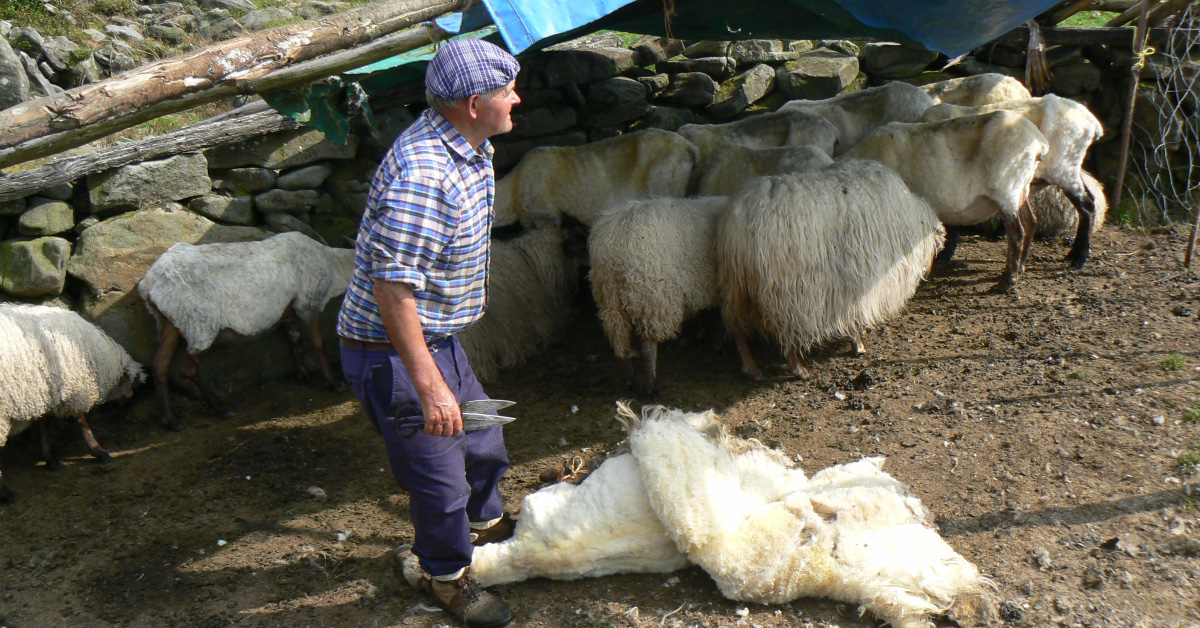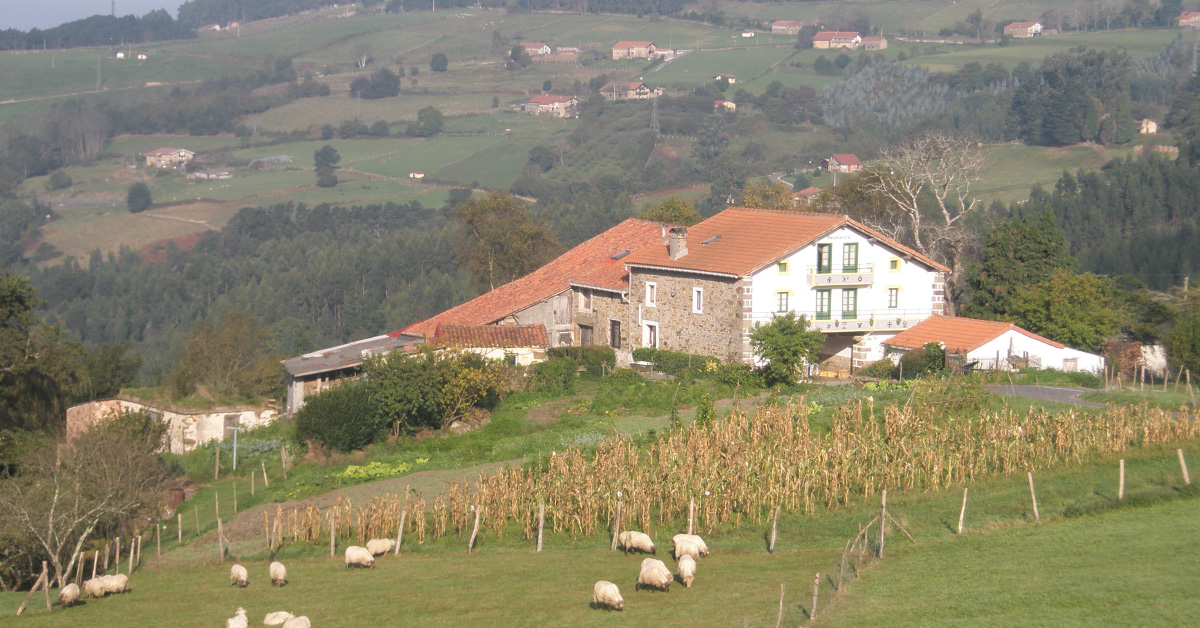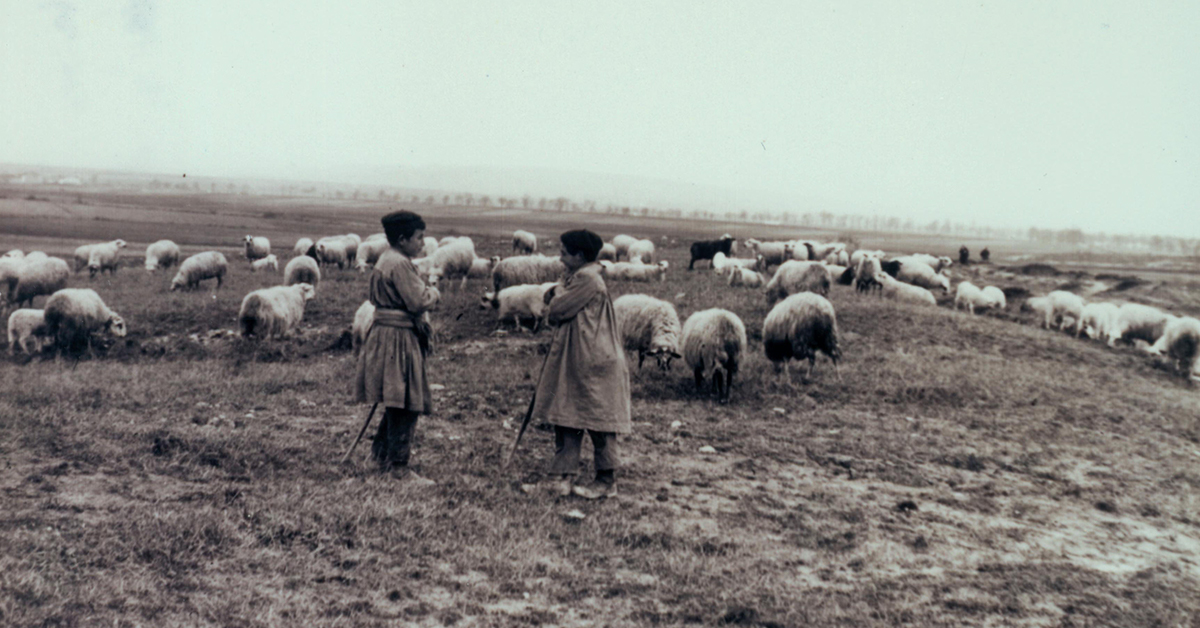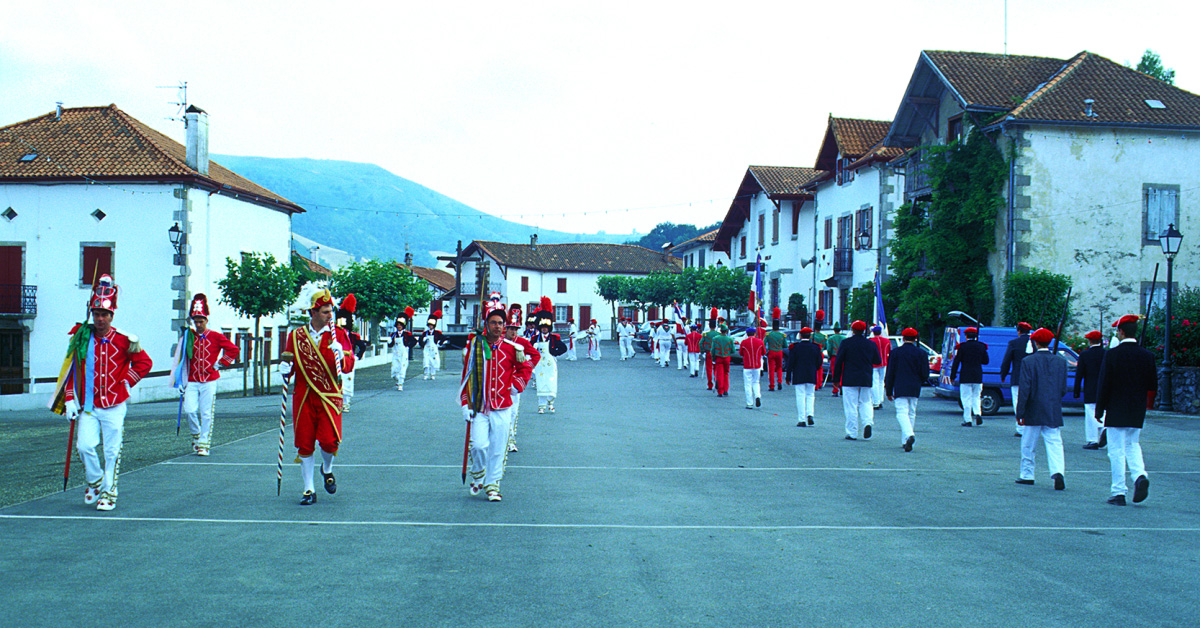Basque ethnography at a glance
Jose Ereño, a shepherd from Orozko, who has been the subject of a previous blog, published on 26 June 2020, finishes making the cheeses and begins to shear his sheep between the second fortnight of June and the first two weeks of July. By June, José and the other shepherds have already made their way up to Gorbeia, where the shearing takes place later than in the lower pastures as it is cooler up there.
He starts work early, before daybreak, as he knows that he needs to take advantage of the cool morning, before the sun begins to heat up. Anyhow, he has built a roof out of interwoven beech branches as protection from the sun.
The farmhouse (baserria) is the Basque house that is characteristic of the dispersed settlement system prevailing in much of Bizkaia.Yet the term baserri includes, apart from the house, the lands belonging to it. In that regard, the approach to the farmstead as a production and family unit was aimed at acquiring the maximum degree of social autonomy and economic self-sufficiency.That was in keeping with the principle of indivisibility of the family wealth.Furthermore, the customary law affecting property and the family would aim to ensure the preservation and development of the wealth, of the family and of the farmstead, by ensuring that the latter remained within the family unit. The basic institutions of the customary law in Bizkaia, such as lineage rights (troncalidad), freedom of testation and transfer of jointly-owned property rights (comunicación de bienes), make sense in this context.
There is an old saying from La pícara Justina that goes: “The only thing you know when you’re born is how to cry” and its versions include “no one is educated when they are born” and “nobody is born with knowledge”. That is relevant because the premise is that any job has a shorter or longer learning curve, but some people never really get past the starting line.
During the surveys on shepherding on Mount Oiz (Bizkaia), I remember talking to experienced shepherds who explained that shepherd boys (pastore-ikastailea) started when they were nine or ten years old and the apprenticeship lasted for at least three years. During that time, they were allowed to practice milking the ewes into small pots with the milk left in the udder once the shepherd had milked them. During shearing (ardimoztea), the shepherd boys started out shearing the wool from the animal’s belly and neck. When it came to slaughtering, they carried it out under the careful eye of the seasoned experts until they were ready to do it by themselves. They even did some of the tasks usually left to the sheepdog.
Around fifty years after 1264, the year in which Pope Urban IV instituted the feast of Corpus Christi (“the Body of Christ”), processions began to form part of the celebrations. “Extraordinary” figures (costumed figures known as giants and big heads, the dragon-like tarasca, troupes made up of members of guilds, etc.) were included with great pomp and circumstance. However, with the passing of time and following the recommendation of the Second Vatican Council to get rid of so much paraphernalia, the festivity has been gradually celebrated on an ever-smaller scale (and in many cases it has disappeared) right up to the present.
The years have not been kind and only a few places now retain or have recovered certain features of the feast day. Special mention should be made of Toledo, Seville, Valencia and other towns with unusual and even eccentric characters. Only a handful of towns or villages celebrate it here. Along with the flag waving in Lesaka, Bera and Doneztebe, Oñati is where the feast day has continued to be celebrated, with barely any changes, since the 16th century.





